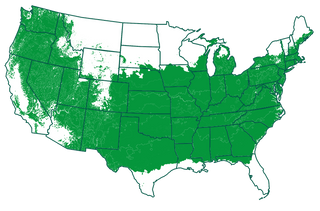White Pineberry Strawberry
-
- FREE Shipping on orders over $129
- In stock
Select size
Additional discounts for large orders
Get up to 25% OFF on your order
| Discount level | Cart total |
|---|---|
15% OFF | $175–$349 |
20% OFF | $350–$499 |
| 25% OFF | $500 or more |
Pay in 4 interest-free installments of $14.99 with 
Customers Also Viewed
Delicious Strawberry that's almost Invisible to Birds & Pests
White Pineberry Strawberry plants are quickly becoming a top trend in gardening. With their distinctive appearance of white skin and red seeds, they’re highly desired. Not only do they stand out visually, but they also offer an exceptional taste.
These hybrids boast a flavor that's both sweet and tart, reminiscent of pineapple. Their firm texture and juicy, soft flesh give them a strawberry-like bite. Together, these qualities earned them the “pineberry” name.
While many birds and pests are drawn to the vibrant red skin of strawberries, the pale hue of Pineberries makes them nearly invisible to these critters. This means you can enjoy your harvest without worrying about wildlife stealing your fruit.
Pineberries are making a splash in the culinary world. From pies and jams to creative recipes, these strawberries are taking dishes to new heights. You don’t need to bake with them to appreciate them, either. Just pluck a few for a healthy, fresh snack. Their delightful fragrance is sure to make your mouth water before you even take a bite.
Fortunately, these berries are simple to grow, both in the ground and in containers. Whether you plant them in your garden or keep them on your deck or patio, you’ll be rewarded with an abundance of delicious Pineberries.
Your friends will be amazed when they see these unique berries, which resemble strawberries but with white skin. Most people have never encountered them before, so they’ll be eager to check out your garden again and again.
Pineberries are enjoyable to grow, too. They produce small white flowers before yielding large, one-of-a-kind berries. These plants are cold-hardy and can even thrive in northern climates. If your area experiences freezing temperatures, just place the plant in a container and bring it indoors during winter.
Because Pineberries aren’t widely available, they tend to sell out quickly. Be sure to get yours before they’re gone!
Planting & Care
The Wonderful Pineberry (Fragaria) is a variety of strawberry known for its striking white skin and red seeds, making it harder for birds and pests to spot compared to typical red strawberries. With a flavor similar to pineapple, these plants live up to their name. And don’t worry – they’re not genetically modified in any way. Typically growing as ground covers, Pineberries reach 8-12 inches tall and 10-18 inches wide. They're ideal for growing zones 5-8 but can also be potted and brought inside during the colder months. As an “everbearing” plant, the Pineberry will produce fruit throughout the season, though it may slow down during the summer heat. Enjoy them fresh from the vine or incorporate them into your favorite jams or pies!
Seasonal Planting Tips:
-
Spring & Fall are the best seasons to plant Pineberries. If planting in the fall, make sure you allow enough time for the ground to settle before it freezes. For spring planting, ensure your soil is dry and workable and that the risk of frost has passed. It’s recommended to plant on a cloudy day or later in the afternoon to avoid heat stress.
Location:
Choose a sunny spot (6-8 hours of sunlight a day) for your Pineberries to thrive. Avoid planting near trees or plants that could overshadow them or compete for water and nutrients. They prefer well-drained, sandy-loamy soil with a pH of 5 to 7. If your soil doesn’t drain well, consider using a raised bed to improve drainage and prevent root rot.
Planting Instructions:
-
Dig a hole deep enough to accommodate the roots and twice as wide.
-
Create a mound of soil at the bottom of the hole, ensuring it’s level with the surrounding soil.
-
Place the plant on top of the mound, spreading the roots evenly down the sides. The crown should sit at soil level.
-
Loosen the soil around the plant so runners can easily establish.
-
Backfill with soil, lightly tamping it down as you go to avoid air pockets.
-
Avoid packing the soil too tightly, and water the area right after planting to settle the soil.
-
Mulch with shredded leaves, pine needles, straw, or compost to help keep the soil cool and promote better growth.
Watering:
Pineberries need consistent watering to thrive, particularly during the growing season. Aim for 1 to 2 inches of water weekly. Ensure the soil drains well to prevent root rot. Yellowing or drooping leaves typically indicate overwatering, while dry, browning leaves are a sign of underwatering.
Fertilization:
Apply a balanced 10-10-10 fertilizer about 4-6 weeks after planting and again in August. Too much fertilizer can lead to excessive leaf growth with fewer flowers. For organic growth, you can use blood meal for added nitrogen and bone meal for phosphates, applying them once a month from June to September.
Pests & Diseases:
While birds and slugs may be attracted to your plants, Pineberries’ white skin often makes them less noticeable to pests. If you do have problems, protect your plants with bird netting and use copper ribbon to deter slugs.
Full Planting & Care Instructions
Product Details
| Mature Height: | 1-2 ft. |
| Mature Width: | 1-2 ft. |
| Sunlight: | Full Sun |
| Growth Rate: | Moderate Growing |
| Does Not Ship To: | AZ |
| Grows Well In Zones: | 5-8 outdoors |

Growing Zones: 5-8 outdoors
(hardy down to -10℉)
Customer Reviews & Photos
Based on 0 reviews















